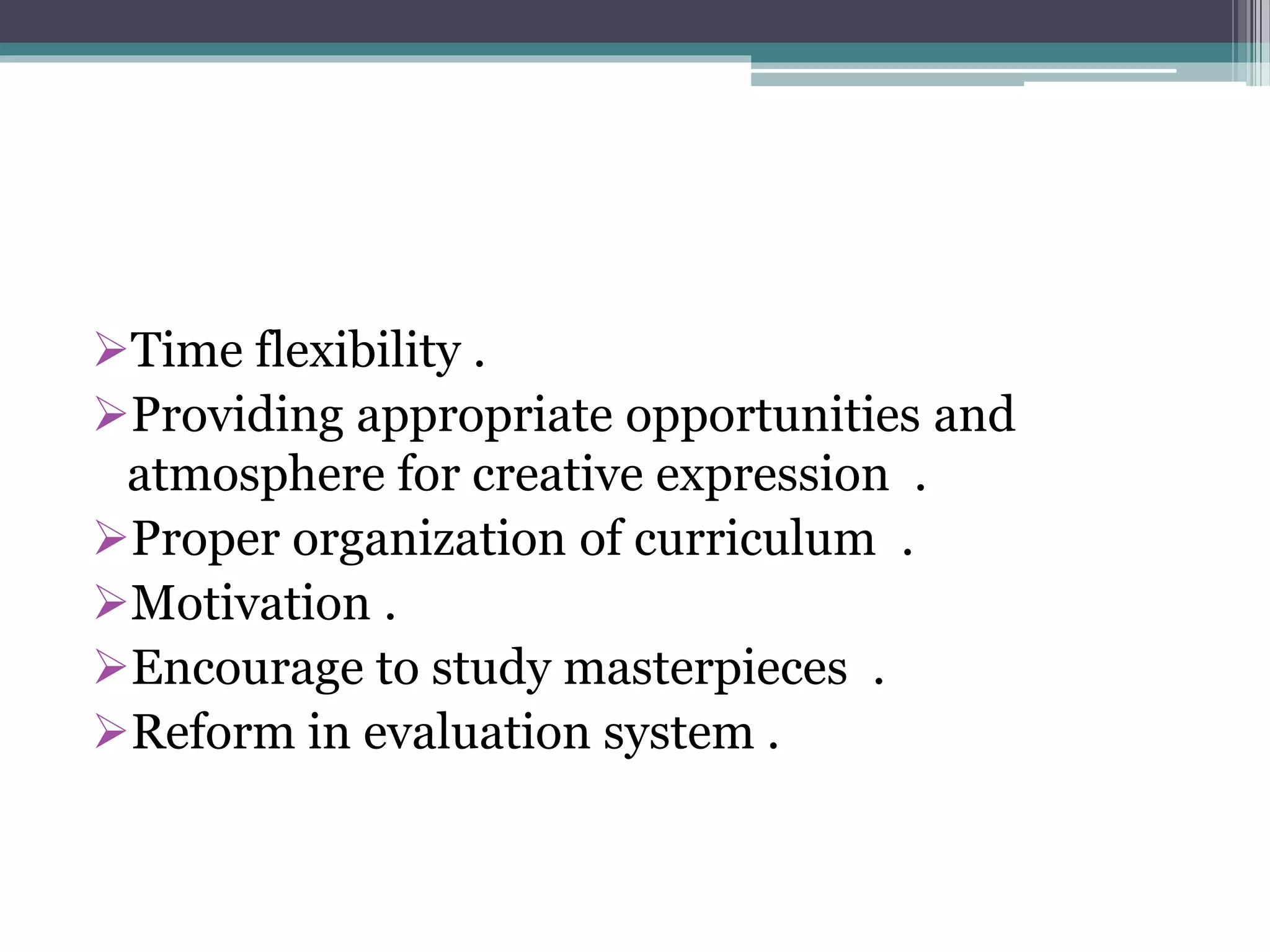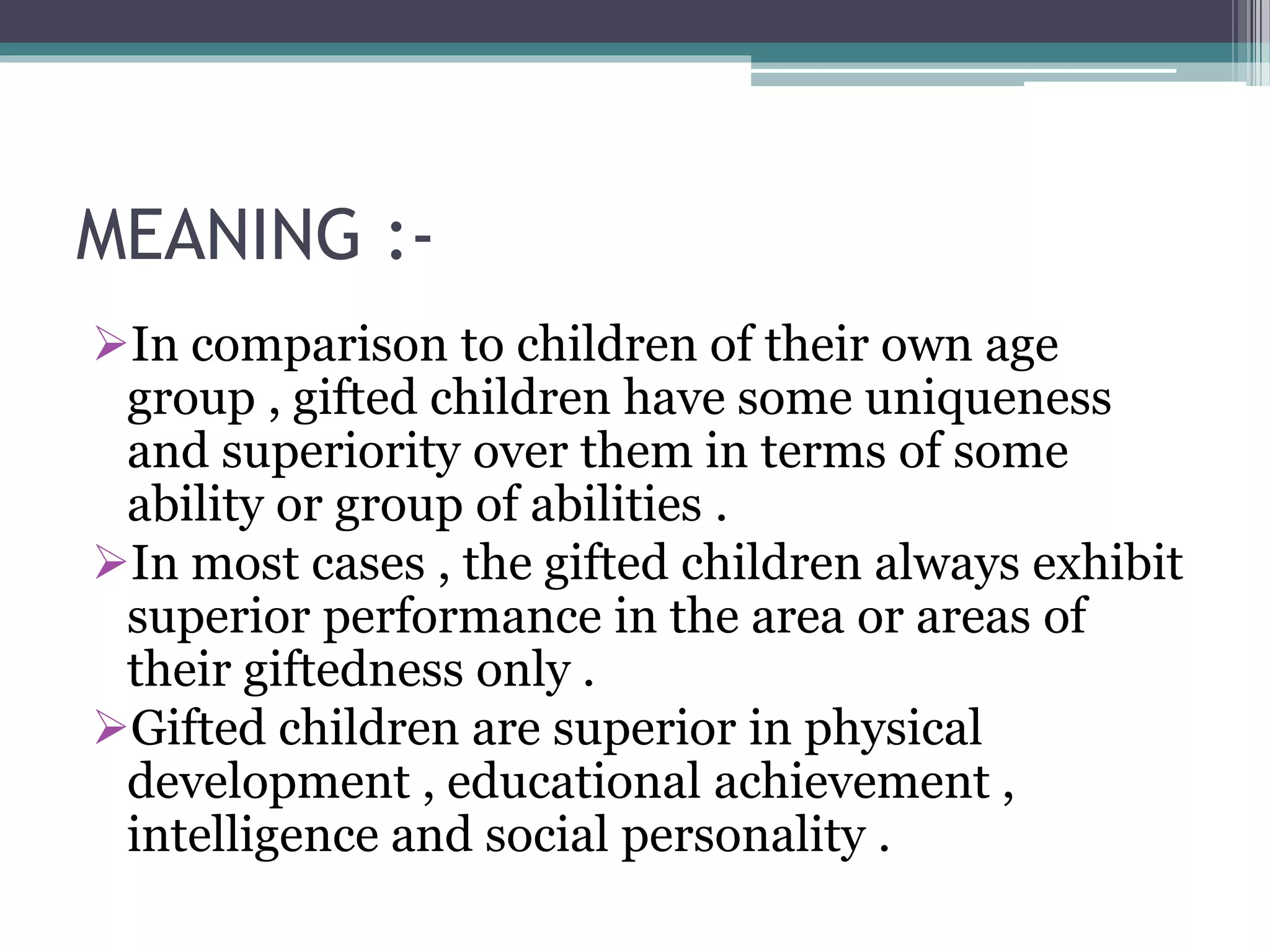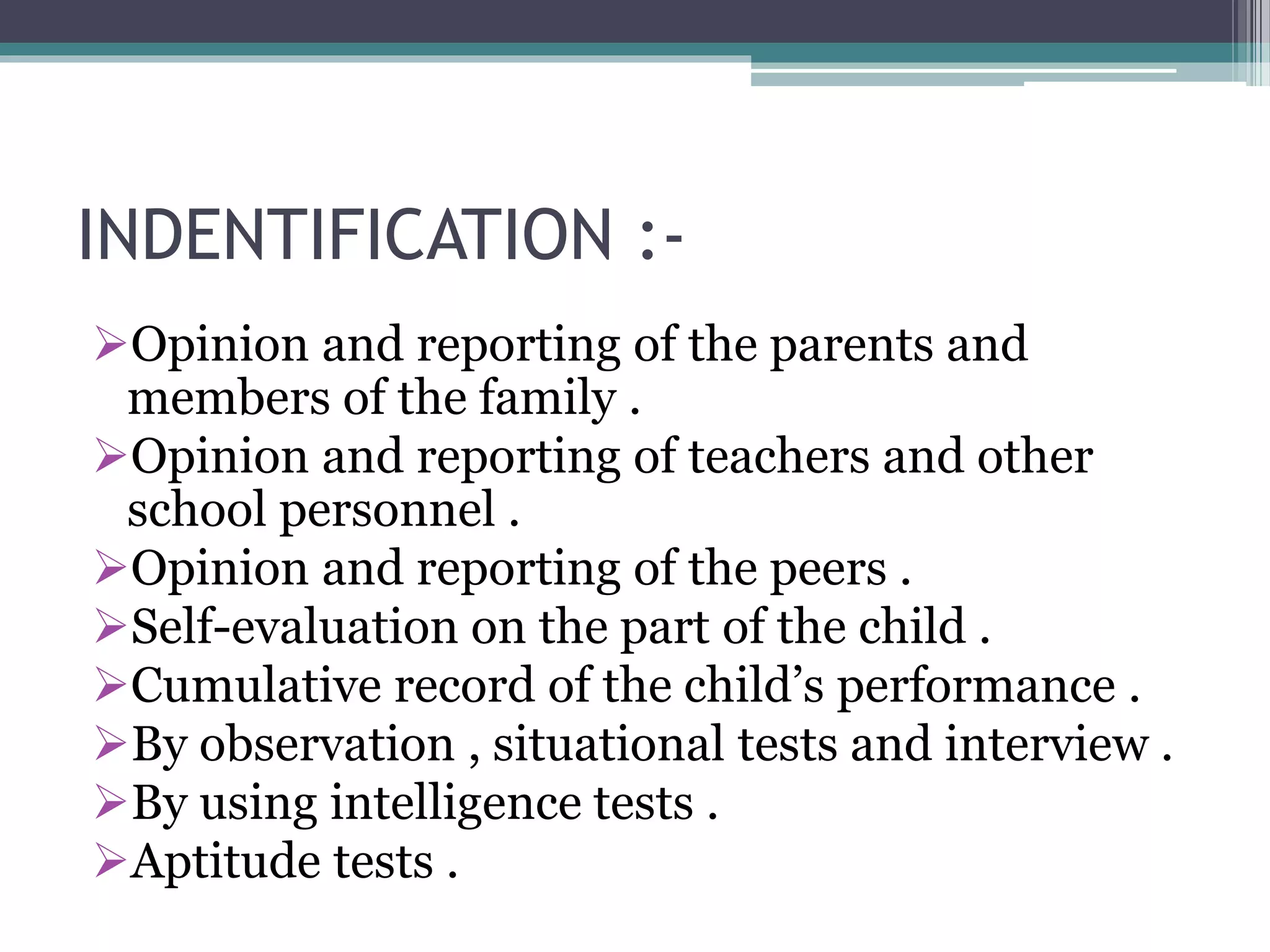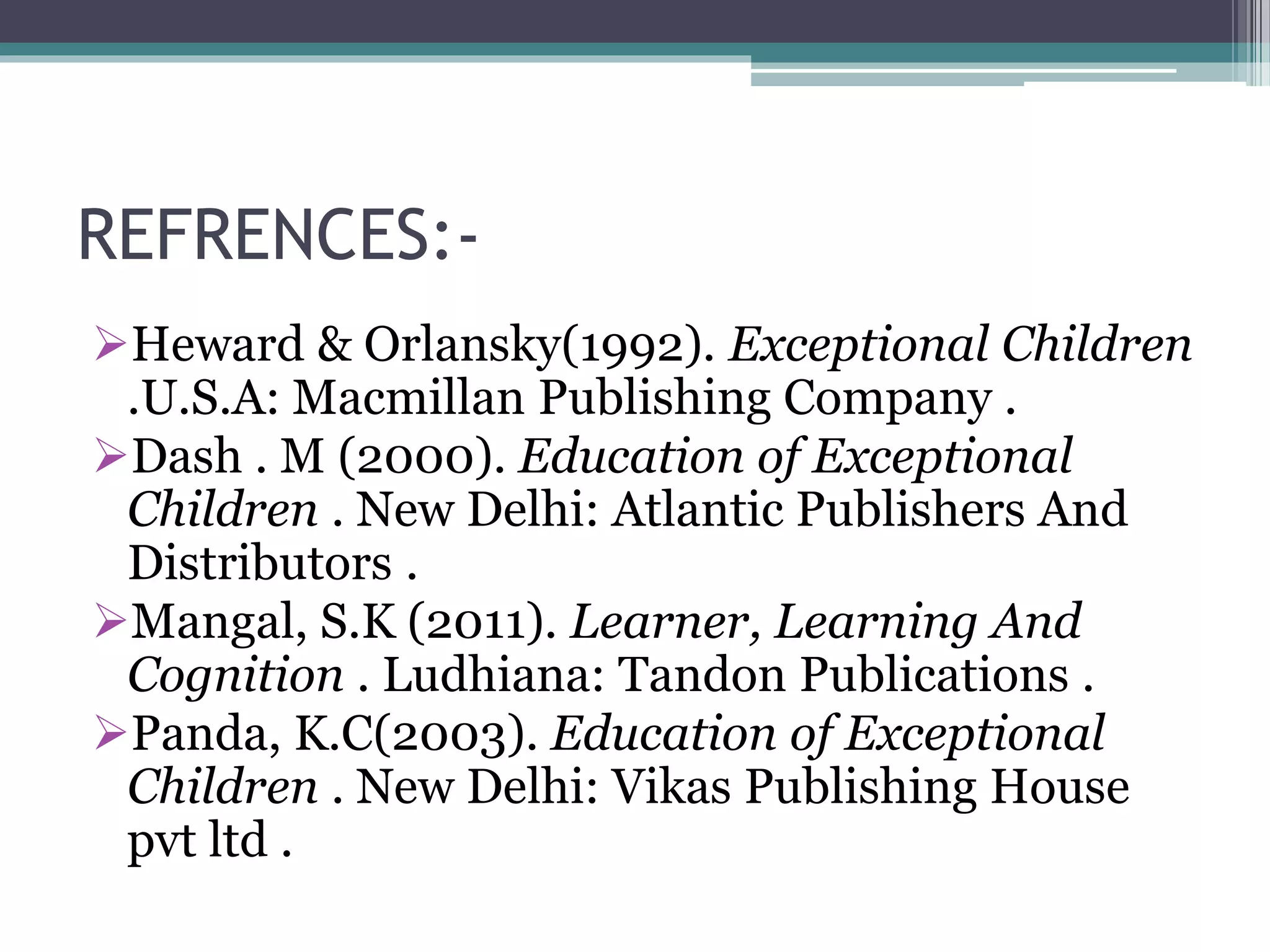This document discusses positive deviation and defines positive deviants as individuals who are able to find better solutions to problems than their peers despite facing similar challenges and lacking extra resources. It provides details on creative children and gifted children as types of positive deviants. Creative children are described as having traits like independent thinking and curiosity, while gifted children demonstrate high ability, creativity, and task commitment. The document outlines methods for identifying positive deviants and discusses their characteristics and needs.



























